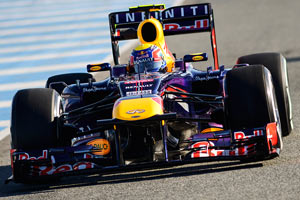http://www.high-temperature-composites. ... rokarb.htmatanatizante wrote:There are special polyamides resins with thermoplastic behavior, such as this one: http://www.arizonachemical.com/Global/P ... 202626.pdfTim.Wright wrote:.
... 300 deg is well beyond the maximum temp of any normal composite resins. And I'm sure its well above the maximum temp of the plank material also. Heating up the undertray to that sort of temperature would just destroy it.
As you could see this resins could easily be exposed to air for up to 2 hours at 210°C (410°F) or 3 hours at 190°C (374°F) without skin formation or significant viscosity increase ...
Now carbon fibers alone has a high thermal dissipation coefficient and within a carbon fiber structure it could easily surpass the 300°C test stress.
In this test matter two good questions are needed to be answered:
1. How long that 300°C temperature was applied to the structure?
2. The test was undertaken when this particular temperature was reached?
F1 exhaust blows out +1000°C centigrade temperatures right onto the floor and suspension parts
F1 carbon brakes operate at 1900°C centigrade.
I think it's safe to say that 300°C isn't nearly near the maximum temp, even though presumably the reinforcements of the suspension parts and exhaust parts are not neccesarily the same as a front wing or t-tray.

